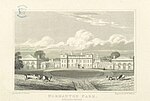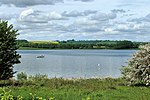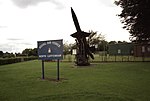Rutland (), archaically Rutlandshire, is a ceremonial county in the East Midlands of England. It borders Leicestershire to the north and west, Lincolnshire to the north-east, and Northamptonshire to the south-west. Oakham is the largest town.
Rutland has an area of 382 km2 (147 sq mi) and a population of 41,049, the second-smallest ceremonial county population after the City of London. The county is rural, and the only towns are Oakham (12,149) and Uppingham (4,745), both in the west of the county; the largest settlement in the east is the village of Ketton (1,926). For local government purposes Rutland is a unitary authority area. The county was historically the smallest in England, a fact reflected in the motto of the county council: Multum in Parvo, or "much in little".The geography of Rutland is characterised by low, rolling hills, the highest of which is a 197 m (646 ft) point in Cold Overton Park. In the 1970s a large artificial reservoir, Rutland Water, was created in the centre of the county. It is now a nature reserve, serving as an overwintering site for wildfowl and a breeding site for ospreys. The older buildings in the county are built from local limestone or ironstone, and many have roofs of Collyweston stone slate or thatch.
There is little evidence of Prehistoric settlement in the county, though Roman habitation is suggested by the discovery of a large Roman mosaic and probable farming complex just west of Ketton. It was certainly settled by the Angles from the fifth century and later formed part of Mercia. It is not mentioned as a distinct county until 1179, and during the Domesday Survey was treated as part of Nottinghamshire and Northamptonshire. During the High Middle Ages much of the county was forested and used as hunting grounds, a tradition which continues to the present with packs such as the Cottesmore Hunt. The county's main industry is agriculture, with wool being particularly important in the sixteenth century, and there is a limestone quarry near Ketton. Rutland bitter is a distinctive ale associated with the village of Langham.












